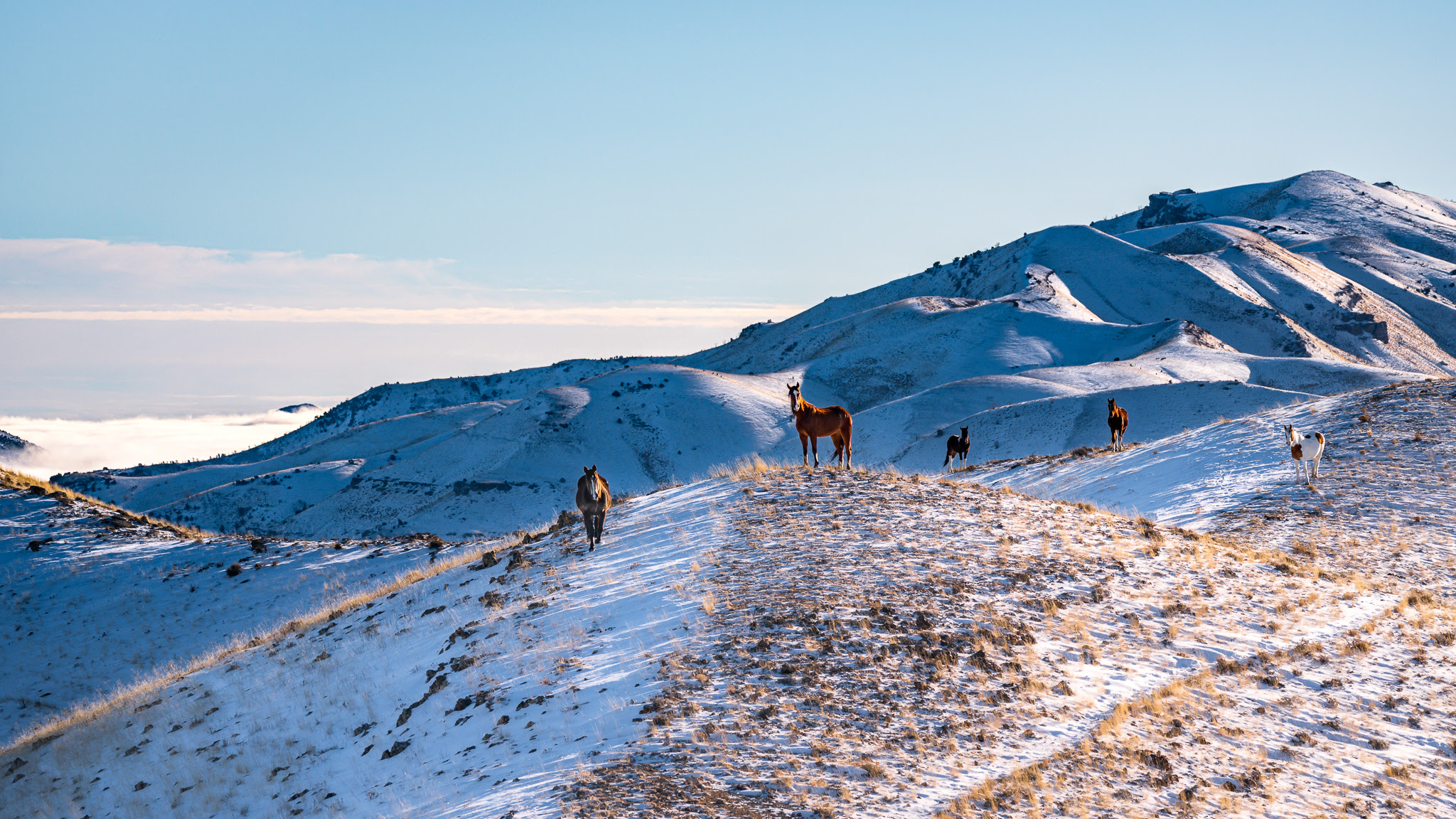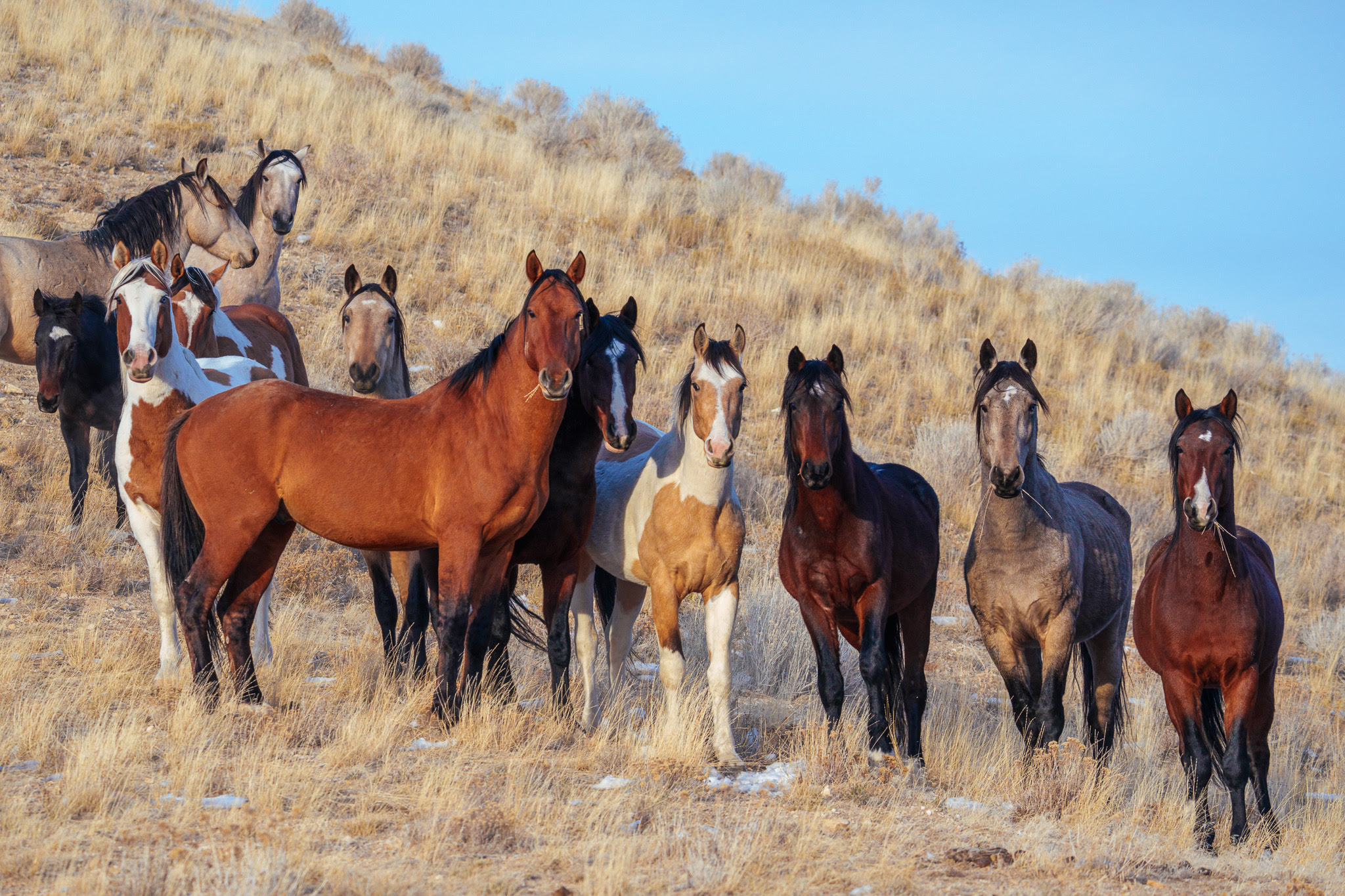Why I hike 5-10 miles a day for wild horses
The following is from the American Wild Horse Campaign:
Allow me to introduce myself — I’m Tandin, AWHC’s Utah Conservation Operations Manager. For the last nine months, I have spent most of my time living on public lands in my travel-trailer, tracking and documenting a remote herd of wild horses that needed our help in Utah’s Cedar Mountain Herd Management Area (HMA).
This is a very special population of wild horses that was subjected to a large helicopter roundup last year. They live in an area where water availability has been an issue and the horses are very wild, difficult to find amongst mountainous terrain, and unaccustomed to human presence.

DONATE NOW TO KEEP OUR FIELD PROGRAMS RUNNING!
Prior to the roundup, I had come to know many of the bands that make up this beautiful herd, and it was heartbreaking to watch so many of them lose their freedom. However, it fueled my commitment to work toward a better way to protect the horses who remained on the range. And so, when the capture operation was over, I returned to the field.
AWHC is committed to the boots-on-the-ground work necessary to shift wild horse management from reactive solutions (like roundups) to proactive solutions that keep wild horses wild. Will you continue powering their work with a donation today? As the group that operates the world’s largest fertility control program for wild horses in Nevada, we know firsthand how important fieldwork is to successful conservation programs.
Each time I go out, I hike between 5-10 miles to locate horses to identify and enter into our database. So far, I have documented and identified approximately 500 individuals. (Post-roundup, about 390 wild horses remain in the HMA.)
- I’ve documented 65 bands with an average of 5.98 in each. The largest band I’ve found has 13 members.
- Bachelor stallions make up 16.3% of the population.
- 30.3% of the horses are Pintos, 15.5% are Buckskins, and 14.2% are Bays — making this one of the most colorful herds in the West.
I have also identified every water source in the HMA and have been working with stakeholders in the area to come up with solutions to ensure water continues to flow.
This job is very personal to me. It’s been an opportunity of a lifetime to get to know and spend time with these amazing horses — watch the bands tend to their young, the bachelors spar, and the lead mares tell everyone what to do.

DONATE NOW TO KEEP OUR FIELD PROGRAMS RUNNING!
All of AWHC efforts in the field — from assessing the condition of wild herds and their habitat, to documenting any violations during roundup and capture operations, to implementing humane fertility control programs — helps us further our work to end the traumatic roundup and warehousing of wild horses and burros in holding facilities.
I’m proud to be part of AWHC’s work to shift wild horse and burro management in a humane and sustainable direction that keeps these animals in the wild with their families where they belong. Will you make a donation today to continue AWHC’s field work in our fight to keep wild horses and burros wild and free?
With your support, we can ensure these magnificent mustangs that I have come to know and love remain wild.
Thank you.

Tandin Chapman
Utah Conservation Operations Manager
American Wild Horse Campaign
